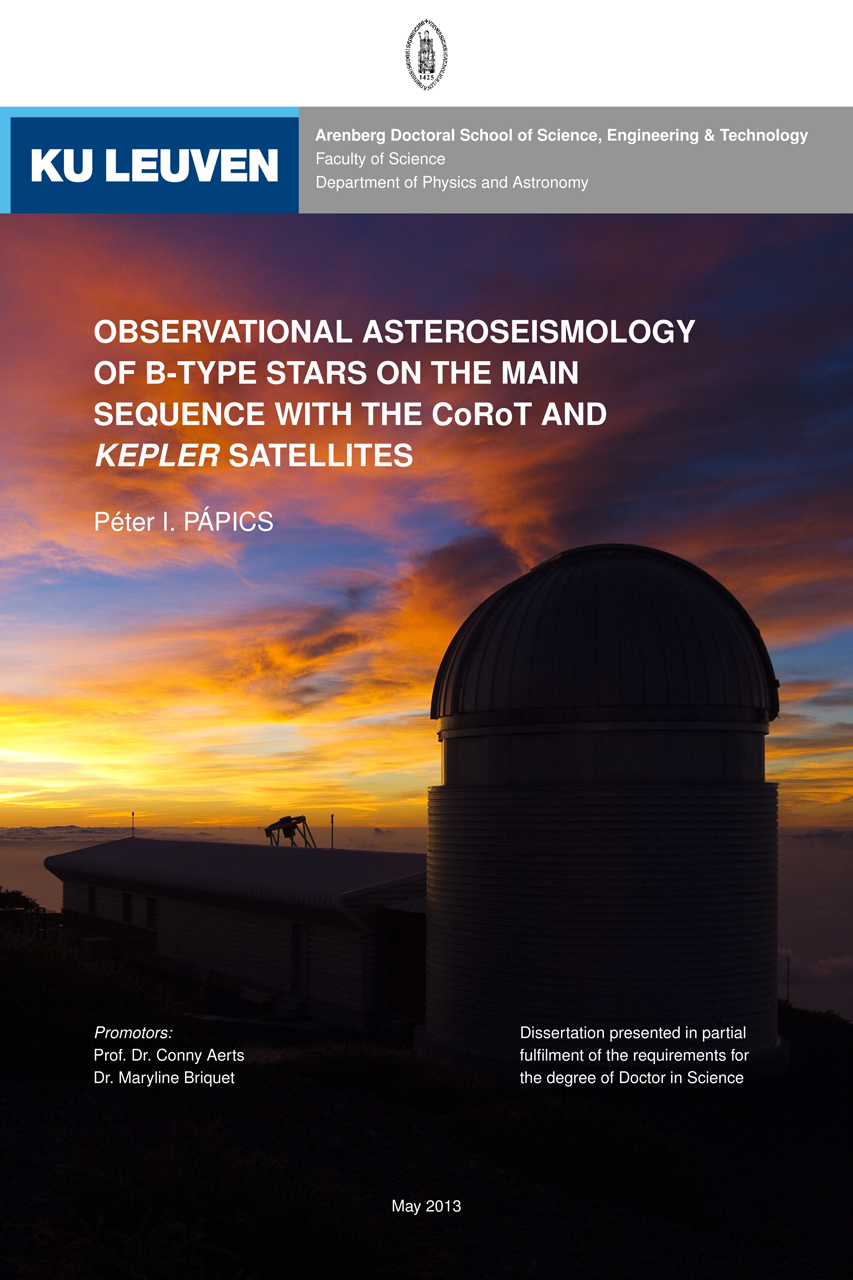 Models of stellar structure and evolution are cornerstones of many research fields in astrophysics, thus the calibration of these models is of high importance. Asteroseismology – the detection and interpretation of waves propagating through different layers of stars – provides the tools to study the interiors of stars with different masses and for most stages of stellar evolution.
Models of stellar structure and evolution are cornerstones of many research fields in astrophysics, thus the calibration of these models is of high importance. Asteroseismology – the detection and interpretation of waves propagating through different layers of stars – provides the tools to study the interiors of stars with different masses and for most stages of stellar evolution.
Comparing theoretical pulsation frequencies of stars computed using state-of-the-art pulsation codes and stellar evolution models with those of observed modes can not only deliver strict constraints on the fundamental parameters and on the structure of the studied objects, but discrepancies between models and observations can also point out problems with the physics included in the model, or inaccuracies of model parameters connected to specific physical processes.
B-type stars are massive and hot stars, playing an important role in the evolution of the Universe. They have a convective core and a radiative envelope, which means that for a full physical description of their structure and evolution, internal processes like core overshooting, rotation, and convection need to be included. These effects are poorly known, and a better precision can be reached through comprehensive seismic studies. However, up till now, the number of such studies detailed enough to provide feedback on current models is too limited.
In this thesis we present four detailed observational case studies of selected B-type stars in the core-hydrogen burning phase, covering a wide range of effective temperatures and rotation rates, while looking at both single stars and binary systems. We combine continuous space based photometry from the CoRoT and Kepler satellites with high-resolution spectroscopy assembled at ground-based observatories. We demonstrate and extend the richness of observed variable behaviour in such stars and provide observational constraints as input for further seismic modelling.